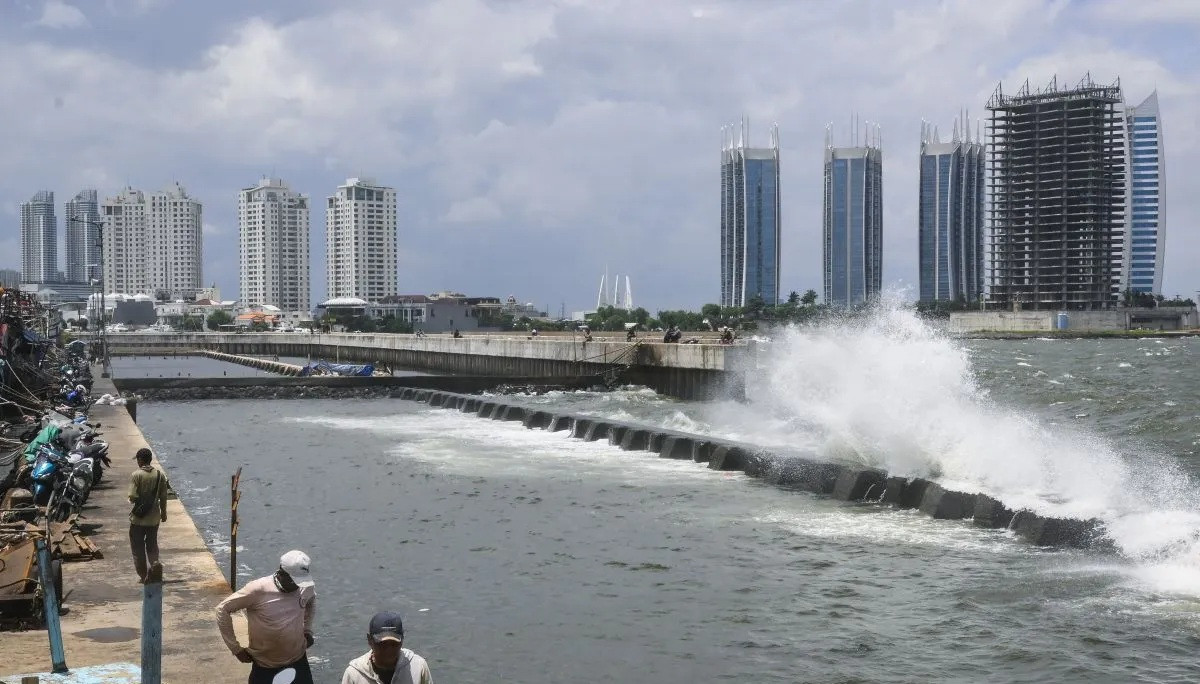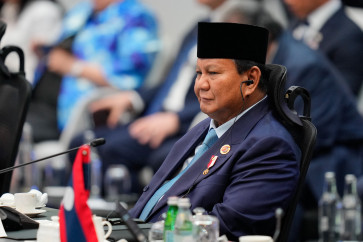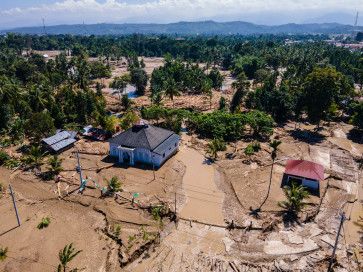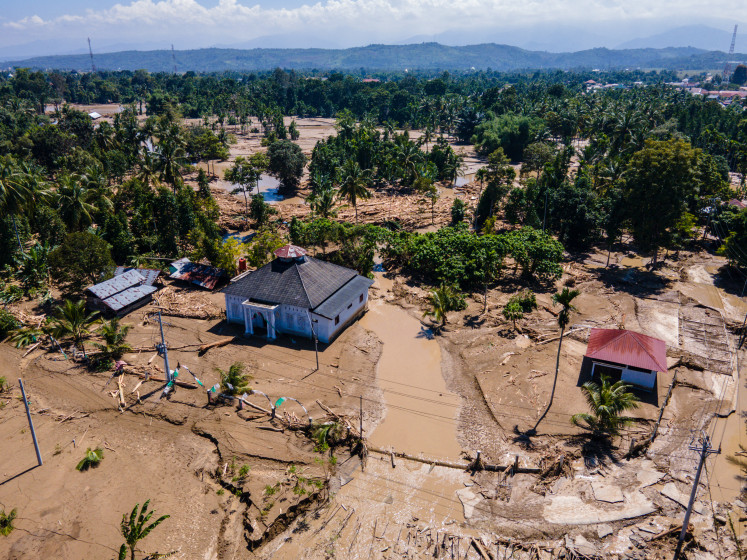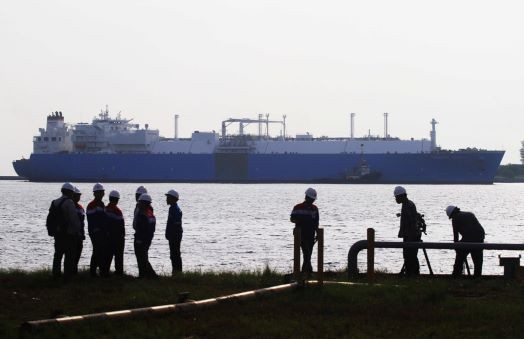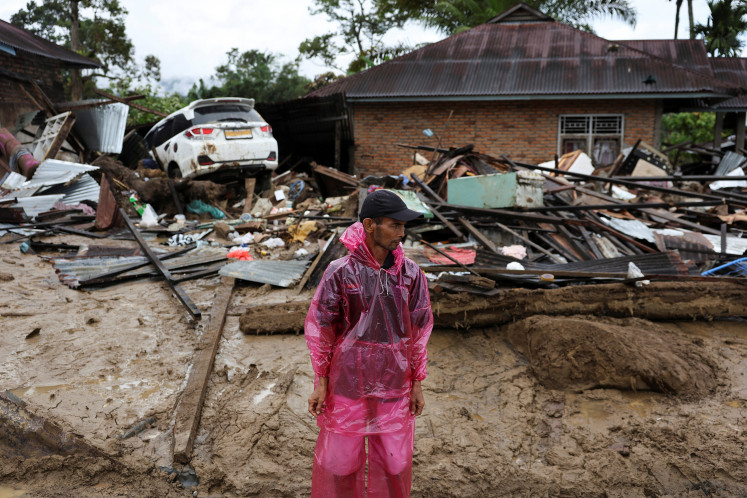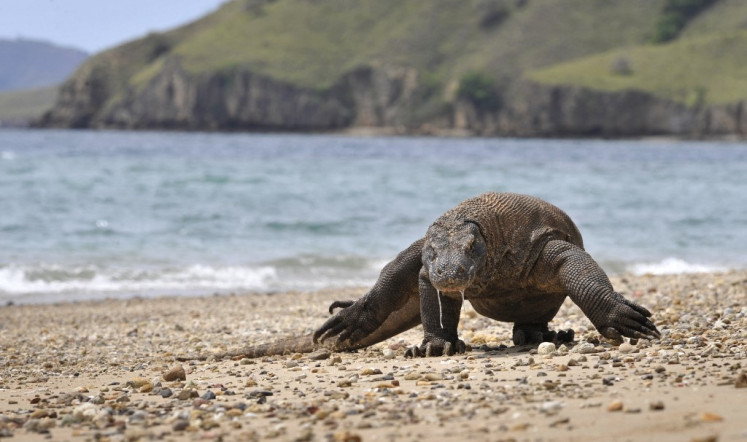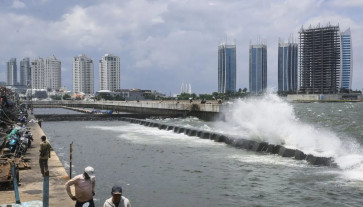Popular Reads
Top Results
Can't find what you're looking for?
View all search resultsPopular Reads
Top Results
Can't find what you're looking for?
View all search resultsJava’s 'giant' seawall: A question of necessity
While Java is often linked with large-scale development, adopting nature-based solutions and sustainable flood management presents a more prudent path for the island's future, rather than hastily implementing the "Giant Sea Wall" project.
Change text size
Gift Premium Articles
to Anyone
J
ava, an island steeped in history and myth, is famously associated with two ancient giants: Meganthropus paleojavanicus, or “Big Man of Ancient Java”, an extinct early human genus, and the majestic jung Jawa, a colossal ship. Java’s creation myth echoes this theme of giantism, which tells of a giant turtle and a dragon that worked together to stabilize the island by planting the peak of Mount Meru upon its drifting form.
Now, the country’s most populated island confronts a modern-day architectural behemoth: the proposed “Giant Sea Wall”.
This ambitious plan, championed by President Prabowo Subianto at a recent infrastructure conference, aims to construct a 500-kilometer barrier stretching from Banten to East Java and has a staggering price tag of US$80 billion. While the concept of a building a seawall on Java dates back to a 1995 proposal from the National Development Planning Agency (Bappenas), its revival has ignited a fierce debate centered not just on its funding and potential environmental impact, but also fundamentally on its true purpose and whether it represents the optimal solution for Java's future.
The notion of a huge seawall wasn't initially conceived as a flood defense. Rather, its origins lie in the urban development boom of the mid-1990s.
Presidential Decree No. 52/1995 on the reclamation of the north coast of Jakarta and Presidential Decree No. 73 of 1995 on the reclamation of Kapuknaga Beach in Tangerang, Banten, were issued to facilitate the creation of a waterfront city at a time Jakarta did not face chronic, major flooding.
The rationale for reclamation was to transform Jakarta’s northern coast into a vital economic hub, which envisioned a 5,000-hectare waterfront city as a new icon for the capital, developed through a public-private sector partnership. Previous reclamation efforts at Ancol, Pantai Indah Kapuk and Pantai Mutiara had set a precedent.
However, this grand vision was abruptly halted by the 1997 Asian financial crisis, followed by the political upheaval in 1998 and the subsequent reform era. The North Jakarta coastal reclamation project stalled and was even canceled by then-environment minister Nabiel Makarim due to noncompliance with the environmental impact assessment (Amdal). Despite this, developers successfully challenged the minister’s decision at the Supreme Court, which resulted in the project’s eventual reinstatement.

